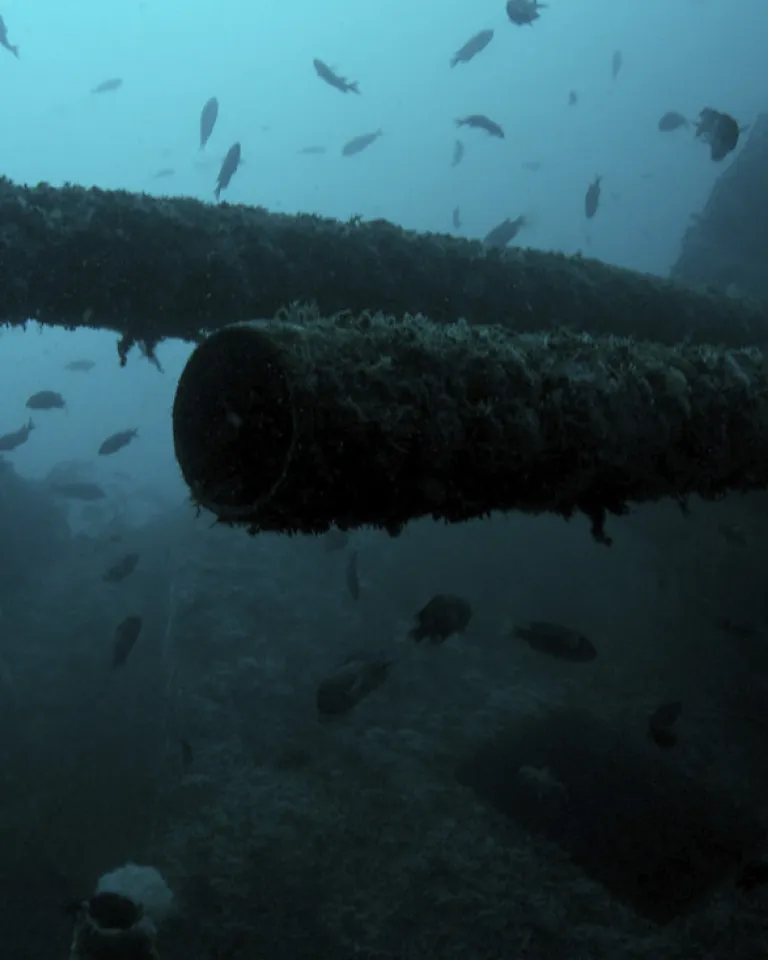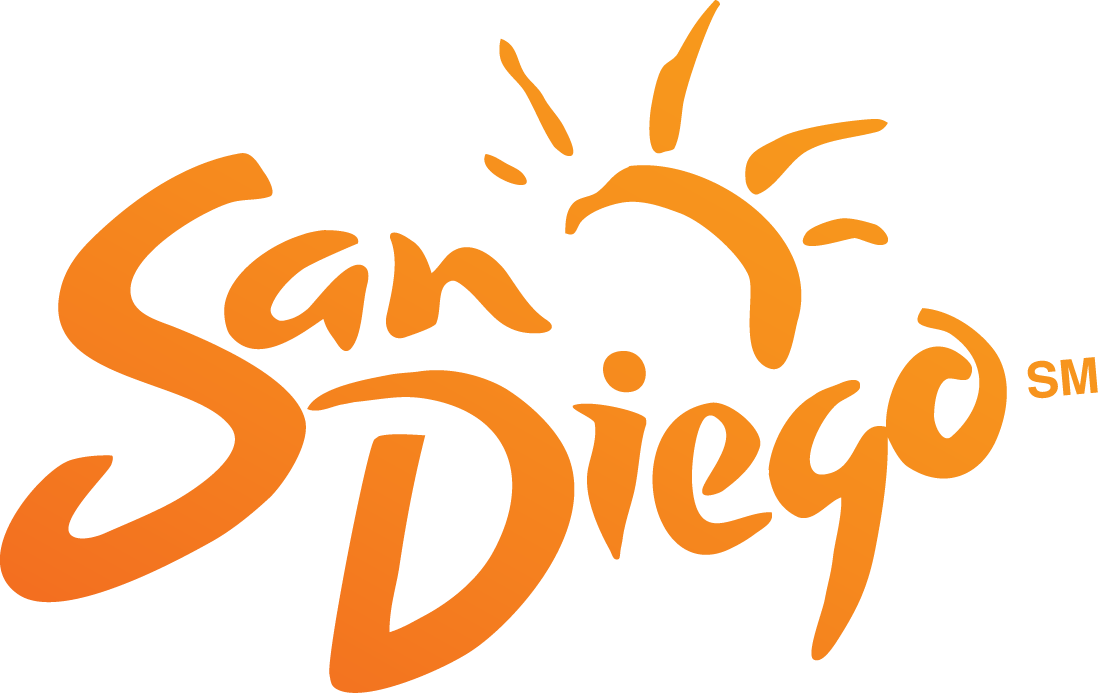The HMCS Yukon Dive in San Diego

The HMCS Yukon wreck dive turned San Diego's Wreck Alley into a must-see diving destination.
The HMCS Yukon wreck dive turned San Diego's Wreck Alley into a diving destination.
The HMCS Yukon was a Canadian destroyer escort, 366 feet long, 40 feet wide, with six decks and over 100 compartments. Now it's one of America's newest and maybe best underwater playhouses. It was gutted and cleaned before being sunk in 100 feet (30 m) of water in the Pacific Ocean off Mission Bay in San Diego's "Wreck Alley," only two miles west of the Mission Beach roller coaster. Practically overnight, Wreck Alley changed from a local attraction to a diving destination worth a long trip. There were divers from Canada and Brazil, climbing over each other in the rush to be among the first divers to visit the wreck.
Mission Accomplished
The ship's new mission is simple: generate excitement about San Diego diving and demonstrate how a growing stockpile of old ships can be turned into thriving marine habitats. As the first of what the San Diego Oceans Foundation hopes will be many similar projects around the world, the HMCS Yukon could be the flagship of a new generation of wreck dives.
In addition to size, the vessel boasts an intact superstructure including her bridge, deck gear and twin three-inch gun turrets. Inside, the Yukon is a brightly lit maze of tunnels and passageways. Dozens of access holes have been cut into the hull, many interior bulkheads have been removed and hatchways have been enlarged in a process called "Swiss-cheesing." The goal was for a diver never to be more than 30 feet from an exit. As a result, ambient light floods wide interior passageways. Still, there's enough complexity that you can get temporarily lost, or at least imagine that you are lost. This is the playhouse aspect of the Yukon.
Also inside are some special attractions that reward divers for fully exploring the massive ship. It’s a task that Project Yukon organizer Dick Long estimates will take 30 dives, at least.
Let's Be Careful Down There
Although much was done to render the Yukon safe for divers, it still deserves respect. Because the wreck came to rest on its side, not upright as planned, the wreck is a bit more advanced than intended.
- It's Deep. It starts at 60 feet, but you'll go at least to 80 feet, and you'll stay there. The Yukon is a classic "square profile" dive. Watch your computer: you're likely to run out of bottom time before air, especially on your second dive. Depth to the bottom is 100 feet.
- It's Cold. My thermometer read 62F on July 16. At that depth, your wetsuit has compressed to maybe one-quarter of its surface thickness. Wear more thermal protection than you might think necessary, including a hood and gloves.
- It's Dark. In places. When the ship went down ahead of schedule, access holes intended for the No. 5 deck were not made, and all portside holes are blocked. On the other hand, holes on the starboard side now face upward and collect more sunlight. Most of the ship receives considerable ambient light, but lighting patterns are not as originally planned and some areas, particularly the No. 5 and No. 6 decks, are dark. Lights are not necessary on sunny days for most of the ship, however.
- It's Surgey. Currents are sometimes strong along Mission Beach. Current accelerates through openings and around large structures like deckhouses. In some cases, you can be sucked through unexpectedly and thrown against sharp, hard edges.
- It's Disorienting. Inside the ship your world is sideways; floors are walls. It's easy to forget which way is up, let alone fore and aft. Be cautious about penetrating, even though there is ambient light. A slate printed with a diagram of the ship is available from local dive shops, and most openings are numbered and keyed to the diagram. For example, opening "3S5V" is on No. 3 deck, starboard side, fifth back from the bow, and vertical. (Though vertical is now horizontal.) Plan your dives carefully and accordingly.
- It's Busy. On summer weekends the surface over the Yukon buzzes with boat traffic, not only dive boats but sportfishers, outboard skiffs and jet skis. Be careful ascending, and break the surface as close to your boat's dive platform as possible.
Yukon Highlights
Some of the "must-see" attractions are intrinsic to the ship; others have been added:
- Engine Room. Both engines are in place, and were partly opened up for cleaning. Large reduction gears are visible, for example. Many pipes and ducts cross the two-deck-high space. Access directly through hull opening 4S4. Or go "down" the large boiler room air intakes located on No. 2 deck just behind the stack. A Scubapro logo tells you you're in the right place. At No. 3 deck, find a nearby access hole to No. 4 deck and the engine room.
- Rudder Room. The place from which the ship was actually steered, on orders from the bridge. It's located near the stern on No. 4 deck. Go through access holes 4S7 or 4C1.
- Operations Room. On an American ship, this would be called the combat information center. Here is the chart table, and the honor wall with plaques recognizing donors to the Yukon project. It's just below the Bridge, on No. 1 deck. Enter through 1S1 or 1S2.
- Captain's Cabin. Just aft of the operations room, the captain's cabin contains one of two bathtubs on the ship. Enter through BP2V, BS2V or 1S2.
- "Burma Road." A colloquial term for a nearly straight passage that runs most of the length of the ship. It gives an unusually long view inside the ship, and easy access to many compartments. It's on No. 3 deck. There's good access through 3S5 and 3S6.
- "Keeline Cove." This compartment on No. 5 deck was artist Mike Keeline's canvas for a number of paintings. It's billed as the "world's first underwater gallery." Unfortunately, it's pretty dark unless and until the planned hull openings 5S2 and 5S3 are made. You can reach it from the lower part of the Engine Room, by swimming aft. Or go "down" through 4C5V or 4S2V from No. 4 deck above.
The Mystery: Why the Yukon Sank
Organizers planned to sink the Yukon in a blaze of glory. Spectators would watch as demolition charges would punch the final access holes into the hull, sending her sailing upright to the bottom. The ship was towed into place and all was set for a Saturday morning ceremony. But fate had other plans. During the night, swells caught the ship on its side and started it rolling. Access holes cut at No. 4 deck, normally just a few feet above the waterline, started scooping water until the Yukon slipped under the waves, coming to rest on her port side.
In a larger sense, not much went wrong. The cleaning and preparation of the ship for diving was completed. The ship sank at the correct location. And although port access holes are blocked, the starboard holes now admit more light to the interior. Access holes planned for No. 5 deck by blasting as the ship sank were not made, but may be cut out in the future. Most important, the Yukon's opportunity to prove an artificial reef can enhance marine life, and tourism is unimpaired.
How the Yukon Sank
Because the Yukon came to rest on her port side, vertical passages are now horizontal and vice versa. However, divers can still follow wide, sun-lit passageways into the ship's interior. More on the Yukon can be found by following this link.
The Rest of Wreck Alley
Ruby E
The big wreck at Wreck Alley until the Yukon arrived, the Ruby E began life as a Coast Guard cutter. Then named the Cayne, she was 156 feet long and 40 feet wide. It was later converted to a fishing vessel, then a salvage vessel, when it acquired its present name. In the late 1980s, it was donated to the artificial reef program, cleaned, salvaged and sunk. It lies upright in 85 feet of water about one mile off Mission Beach.
The Ruby E was opened up for diver safety, though not as extensively as the Yukon. Though there are not as many access holes, there is a large one on the port side of the hull that gives good access to the middle of the ship, and several in the upper deck. But all compartments receive some outside light. Highlights include the engine room with its pair of big diesels, and the props.
After 11 years on the bottom, the Ruby E is covered with life, including many big white anemones and purple gorgonians. "It reminds me of a Rose Parade float," says one diver.
El Rey
Once a self-propelled barge equipped for kelp harvesting, the 100-foot long El Rey was cleaned and donated to the artificial reef program in 1987. It sits upright in about 80 feet of water. Much of its superstructure has collapsed, so its original appearance is difficult to imagine. But, like the Ruby E, it is thick with invertebrate life. Some say it attracts bigger fish.
NOSC Tower
It looked like an oil platform, but NOSC Tower was a research station built by the Naval Ocean Systems Center until it collapsed in a storm in 1988. Today, it's a tangle of girders and beams from 30 to 60 feet, a more open structure than a ship's hull. "It's like a jungle gym," says Jay Ferland, a Mission Bay dive boat operator. On the other hand, because the tower is a "natural" wreck, it has more entanglement hazards in the form of dangling cables and tight corners. Broken beams jut out, a collision hazard especially when surge is high.
With 10 years on the bottom, the tower is thickly covered with filter feeders like strawberry and yellow anemones, purple and brown gorgonians, hydrocorals, mussels, sponges and urchins. Here too are many schooling fish like jacks and anchovies.
400 More Yukons?
Supporters of the Yukon project hope it's the first of many ships to be turned into diver-friendly artificial reefs. The U.S. Navy and merchant marine have about 400 obsolete ships in "mothballs" waiting for disposal. Normally, they would be sold for scrap, but the cost of removing toxins like PCBs is high and the price of scrap steel is low, so the ships have no buyers. Meanwhile, they cost $20,000 each per year to store, and some are beginning to leak oil into the water.
An artificial reef program offers a "win-win" solution, says Dick Long, president of the San Diego Oceans Foundation, which brought the Yukon to Wreck Alley. Salvage of valuable equipment and metals from the ship can largely pay for cleaning it and making it safe for divers. Sinking the remaining hulk is cheaper than cutting it up, while providing a haven for new marine life and a tourist attraction. Visit the San Diego Oceans Foundations for more information.
Before doing any boat dive, make sure to choose the right boat. Learn tips for choosing the best scuba dive boat. Also, check out other great dive spots along the San Diego coastline.
